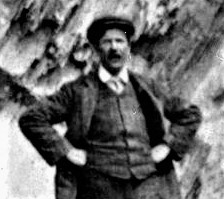The History of Clyn Bach (Glyn Bach)
- petewhittaker5
- Feb 10, 2021
- 2 min read
Updated: Feb 16, 2021
Clyn Bach, later renamed Glyn Bach, which means 'short deep valley' is located close to the Meini Gwyr stone circle, constructed about 2000 BC and marks the centre of Pembrokeshire. Ley stones radiate outwards from the stone circle; one is found in the Pont Hywel Bridge, one at Derlwyn. The land surrounding the stone circle contains many ancient artefacts such as menhirs and cairns. The top field at Glyn Bach is a raised flat hill and has an interesting series of stone enclosures which are unexplained and a pile of fire stones were dug up here.
Photo 1. Meini Gwyr stone Circle
Photo 2. Prehistoric stones used, possibly, for heating water
Pont Hywel bridge and the land around was owned by the Whitland Abbey and was an important route for pilgrims in medieval time. There is also a possibility that the Romans used this route - a local path is known as the 'Roman Road'.

From the 17th Century, slate was extracted from the Gilfach Quarry which borders the land at Glyn Bach. Clyn Bach is noted on an 1842 map but it was sometime after this date that the house was modified into 2 homes, one for the Quarry Manager and one for the Quarry Foreman. A horse used to pull the quarry trucks along rails, had a small stone stable at the front of the property.
Photo 1. The main quarried area at the Gilfach Quarry
Photo 2. Truck wheels, cooking utensils, poles and chains used by the quarrymen
Photo 3. Quarrymen standing in the area as per Photo 1
Photo 1 and 2. Stone weighing scales
Photo 2 Top of weighing scales found at Glyn Bach
Photo 1. Truck laden with slate, running on rails and pulled by horse
Photo 2. Horse with chains and metal pole to attach to the truck
Photo 3. Foreman of the Quarry who lived at Clyn Bach
Photo 1. Chains from quarry horse (Found at Glyn Bach)
Photo 2. Leather shoes and horse bit found buried in a wall at Glyn Bach
The land at Glyn Bach has a seam of green slate to the North East and a vein of Preseli bluestone running down the centre. Gardening can be difficult due to the rocky terrain.
During the second world war, the escarpment overlooking the Pont Hywel bridge, had a trench dug out by the home guard and housed a Bren gun and two smaller guns. It was feared that the Nazis would land on the Pembrokeshire beaches so the 'Carmarthen stop line' was made, with a series of trenches and pill boxes to halt any progress across the Peninsular in the event of invasion. Glyn Bach has one of the few surviving trenches as most were ploughed out post war.
Photo 1. Second World War trench with barbed wire post
Photo 2 and 3. A recently discovered 'table' which may have been built and used by men manning the trench guns for their tea breaks







































Comments